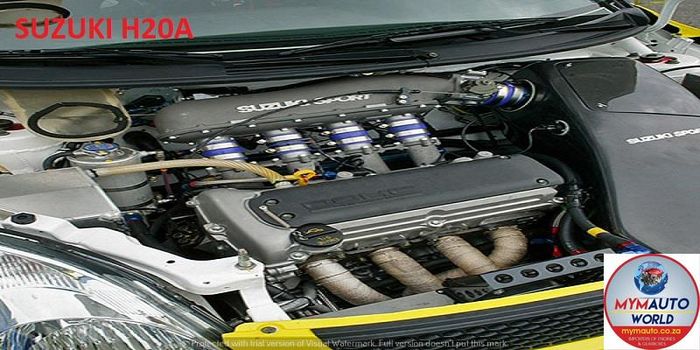Discovering the Inner Workings of a Compact Automobile's Engine System
As drivers, we typically take for given the intricate procedures that occur within the confines of our vehicle's engine system. In this exploration of a compact vehicle's engine system, we will certainly untangle the internal operations of this mechanical harmony, dropping light on the enigmas that drive us ahead on our day-to-day trips.
Burning Process Summary
The combustion procedure in a compact vehicle's engine system is a vital device that effectively converts fuel right into energy to power the automobile. This procedure occurs within the combustion chamber of the engine, where fuel and air mix, stir up, and generate controlled explosions. The combustion procedure contains four major phases: intake, exhaust, power, and compression.
During the intake phase, the piston relocates downward, pulling in a mixture of air and gas right into the combustion chamber. The next stage, compression, involves the piston moving up, compressing the air-fuel mix to enhance its strength. Subsequently, in the power stage, the ignition system sparks the compressed blend, leading to a quick growth of gases that compels the piston back down. This down movement generates the power required to drive the lorry. In the exhaust stage, the burned gases are removed from the combustion chamber through the exhaust valve, preparing the chamber for the next cycle. This cyclic combustion process is essential to the procedure of a compact automobile's engine system, ensuring effective energy conversion for propulsion.
Piston and Cyndrical Tube Interaction

The piston's accurate fit within the cyndrical tube is important for preserving optimum compression and protecting against energy loss during combustion. Limited clearances in between the piston and cylinder wall surfaces guarantee efficient sealing, allowing the piston to move smoothly without enabling gases to leakage past. Proper lubrication is likewise crucial to minimize friction and use in between these parts, boosting long life and efficiency.
Additionally, the layout and materials utilized in producing the piston and cylinder impact engine efficiency and sturdiness. Modern engines usually use important link light-weight yet resilient products like aluminum alloys for pistons and cylinder linings to decrease inertia and improve thermal performance. Generally, the unified interaction in between the piston and cylinder is essential to the engine's functionality and overall efficiency.
Gas Shot System Functionality
Gas shot systems in portable lorry engines play an essential duty in specifically supplying fuel to the burning chamber for controlled and effective ignition. The gas shot system functions by infusing gas right into the combustion chamber at the optimum moment during the engine's operation (opel corsa engine). This precise timing makes certain that the gas blends evenly with the air for proper combustion, resulting in improved gas performance and minimized emissions
There are largely 2 kinds of fuel shot systems used in portable lorry engines: port gas injection (PFI) and direct fuel injection (DFI) PFI systems infuse fuel into the consumption port prior to the consumption valve, while DFI systems inject fuel straight right into the burning chamber. Both systems have their advantages, with DFI providing far better fuel atomization and PFI supplying an extra economical option.
Understanding Engine Air Conditioning Systems
Efficient operation of a portable car's engine depends heavily on the efficiency of its cooling mechanisms. The cooling system in a portable lorry typically is composed of numerous components working together to manage the engine temperature level. Recognizing these engine cooling systems is important for preserving the efficiency and longevity of a small automobile's engine system.

Exhaust System Elements Explained
The ideal functioning of a compact automobile's engine air conditioning systems depends upon a corresponding system called the exhaust system, which comprises various necessary parts for guaranteeing reliable emissions and engine performance. The exhaust system includes elements such as the exhaust click to read manifold, catalytic converter, muffler, link and tailpipe. The exhaust manifold collects exhaust gases from the engine's cyndrical tubes and paths them to the catalytic converter. The catalytic converter then converts dangerous pollutants in the exhaust right into much less damaging discharges prior to releasing them via the muffler and tailpipe.
One critical component of the exhaust system is the oxygen sensor, which keeps an eye on the oxygen degrees in the exhaust gases to assist control fuel intake and guarantee ideal engine efficiency. opel corsa engine. Additionally, the resonator may exist in some exhaust systems to minimize sound degrees. Generally, the exhaust system plays a crucial duty in preserving engine effectiveness, decreasing harmful emissions, and guaranteeing a quieter driving experience for compact lorry proprietors

Verdict
In verdict, the portable vehicle's engine system is a complicated combination of elements that interact to help with the combustion procedure, convert fuel into energy, and remove waste gases. Understanding the internal operations of the engine system, including the piston and cyndrical tube communication, fuel injection system, engine cooling devices, and exhaust system components, is important for keeping ideal efficiency and efficiency of the vehicle.
The burning process in a compact vehicle's engine system is a critical system that efficiently converts fuel right into energy to power the lorry.Gas injection systems in small automobile engines play an essential duty in exactly supplying fuel to the burning chamber for reliable and controlled ignition.There are primarily 2 kinds of gas shot systems used in portable vehicle engines: port fuel injection (PFI) and straight fuel injection (DFI) Comprehending these engine cooling mechanisms is vital for maintaining the performance and durability of a small vehicle's engine system.
The optimal functioning of a compact lorry's engine cooling mechanisms depends on a complementary system understood as the exhaust system, which makes up different crucial elements for making certain reliable exhausts and engine performance.